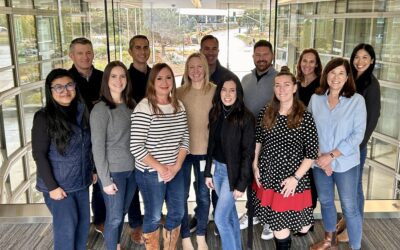Generative Artificial Intelligence (GAI) is the latest game-changer in the technology industry. For years, AI has been integrated into business operations to identify patterns and trends, while also enhancing customer experiences; tailoring content on enterprise platforms and social media channels; enhancing product design; and helping navigate potential supply chain hurdles.
Over the last several years AI has become a buzzword, with companies labeling any new software, app, or platform as “AI enhanced”, sometimes without much discernable additional value and on the consumer side, they rarely leverage large language models (which are the algorithms that incorporate deep learning and large data sets to provide the artificial intelligence).
Generative AI is different. In addition to adversarial neural networks that discern differences, similarities, and patterns, G-AI advances AI architecture through the use of transformers. Transformers learn relationships between data elements and then reassemble the data into new content based on ‘prompts”, which provide the context. Prompts are the inputs used to dialog with the machine, and shape the output. Like any rich conversation, the better the questions, the better the answers.
“Content” may include text (think articles, summaries, job descriptions), images (think graphics, photorealistic images), code (think code completion tools, basic web code), analysis (think data sets, spreadsheets, medicine), and much more (think future medicine, product design).
Unlike past technology breakthroughs, G-AI presents almost no cost to entry. Have a computer, internet connection, and a browser? That’s all users need—and it shows. ChatGPT has an astronomical adoption rate—a reported hundred million users—and it’s less than a year old. Even if that number is cut in half, it would still be the fastest technology ever adopted.
Most recently an experimental project, Auto-GPT, was released that leverages goal-seeking input. One of the first applications, dubbed Chef-GPT, was assigned the goal of discovering and creating unique and original recipes. Chef-GPT took that goal, broke it into tasks, used ‘long term’ memory, and spawned new bots to accomplish the work—autonomously. Even while still in its infancy, the possibilities of GAI are extraordinary.
Despite its potential, there are enormous questions surrounding GAI. Ethical implications, legal considerations, and security concerns must all be addressed before companies can fully take advantage of the technology.
In addition to questions, there are significant challenges in adopting AI.
It’s everywhere.
GAI isn’t limited to one industry, division, function, or discipline. It is ubiquitous and may impact nearly every function in your organization.
It’s evolving at light speed.
Each new advance sees a monumental step forward. And the advances are accelerating. A half version upgrade from 3.5 to 4.0 improved ChatGPT’s bar exam score from the bottom 10% to the top 90% AND introduced (though not yet released) the ability to ingest images, in addition to text.
It’s ominous.
Employees who are experimenting with GAI are starting to wonder: will this take my job or reduce my responsibilities? Many people are becoming concerned about their future.
It holds significant potential for good.
At TiER1, we believe AI can be integrated for good. Proactive leaders can turn it into a competitive advantage without creating chaos in their organizations. To do so, consider these three steps:
-
- Understand where you are in the cycle. This can range from “what the heck is GAI?” to “we’ve already identified our areas of potential impact, data pools, and role needs.” Focus on what is practical and applicable now to create a near-term AI-Integration roadmap.
- Engage employees authentically to help them see what AI-Enhanced performance can look like. Be proactive in helping people find their place in it and to adopt a new personal narrative when needed.
- Build trust-rich teams, exploring together, to develop AI-Agility—the capacity to shape and reshape the organization as it navigates uncharted territory.
Organizations that thrive in the AI-Enabled future will be the ones who actively create that future. No one knows what the “future state” is. No one. We are all on a journey, and it starts with your people. GAI is here for good. Now it’s up to leaders to make it a force for good—for people and for business.
Getting Started with Generative AI
TiER1 has worked at the intersection of business, people, and technology for two decades, always taking a human-centered view of organizational change and people transformation. We’ve applied these learnings to our GAI adoption process. We start by learning just enough to create clear guidelines, then design purposeful experiments that focus on practical applications. Next, openly share the results within the organization and assess their impact, all while listening to customers and continuing to innovate. At TiER1, we can ignite ideas in just two days, build a pragmatic roadmap to turn vision into actionable steps in three weeks, or guide you through a series of insight, impact, and innovation sprints in six weeks that empower your employees to create the future. But the most important step is to just get started.




